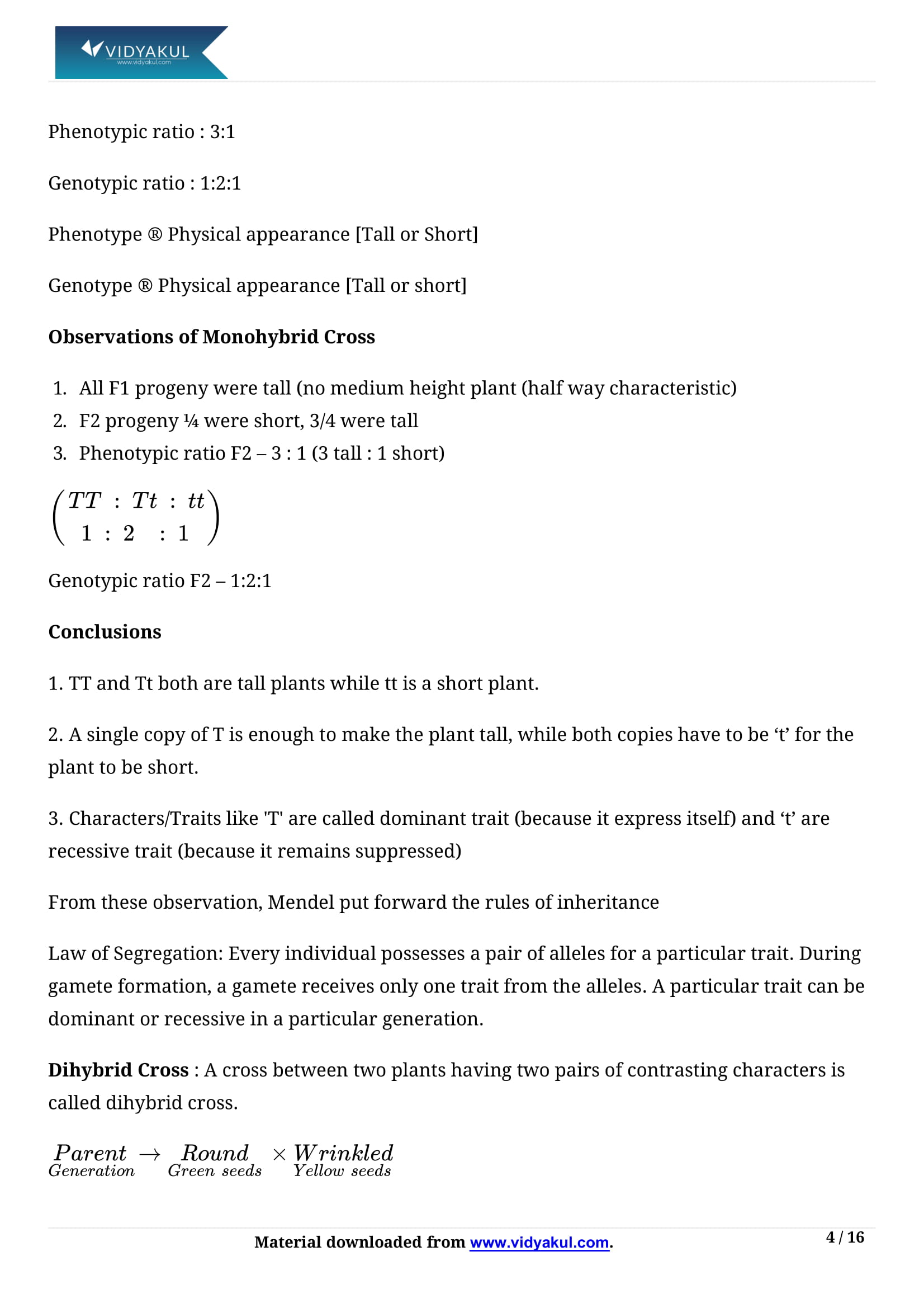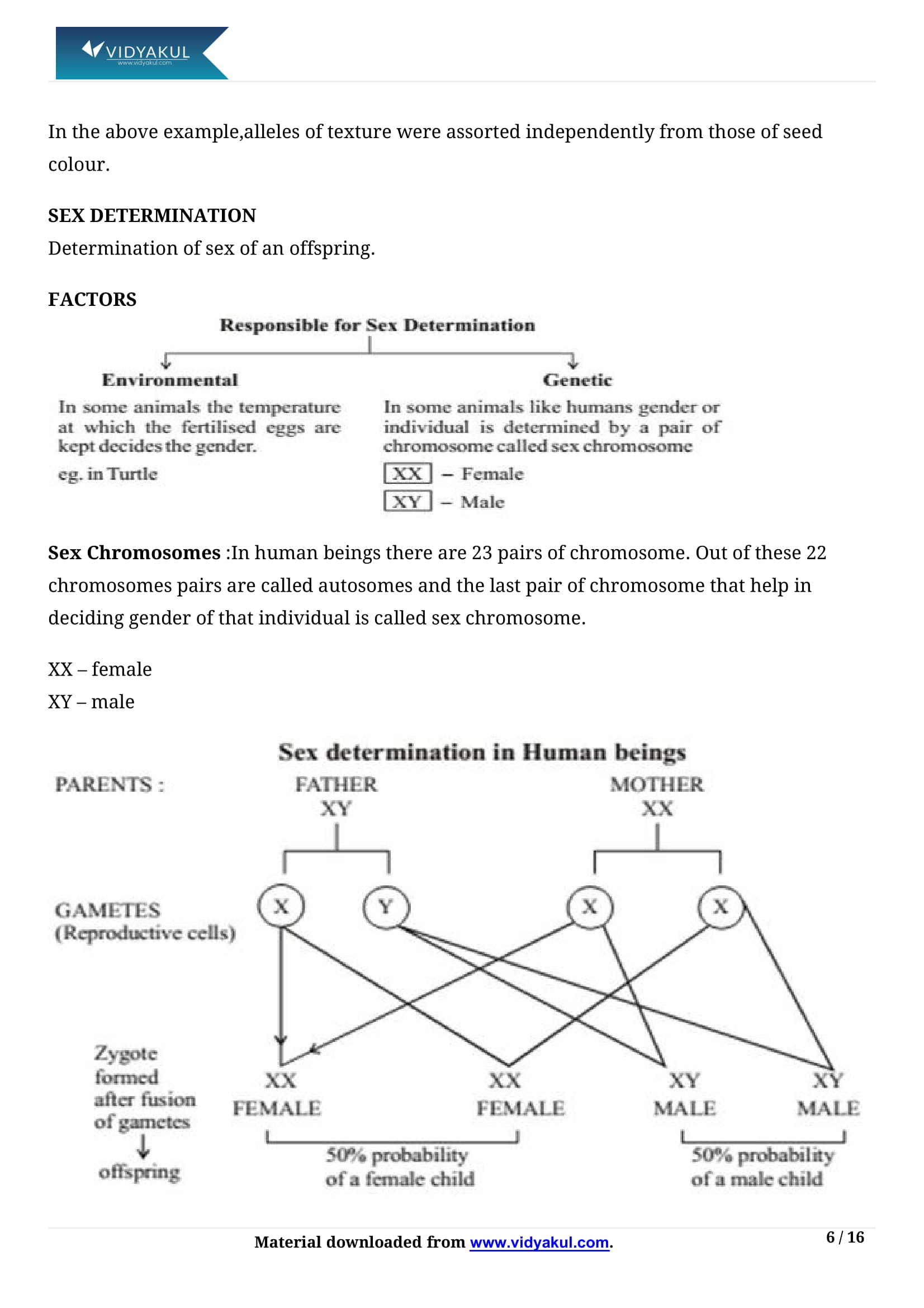Heredity and Evolution Class 10 Notes

Chapter 9 Heredity and Evolution
Inheritance is the passing of traits from one generation to the next. Evolution is defined as a gradual process leading from simple forms of life to the development of complex organisms over many generations. In this chapter we will learn about the mechanisms by which variation is created, the genetic rules that determine the nature of heredity, and how the accumulation of these variations leads to evolution.
These notes helps students better understand the subject matter and solve the questions asked in the exam. So, students can simply register and start their education accordingly. Scroll down to learn more.
CBSE CLASS 10th SCIENCE CH-9
Points to Remember
Below we have provided some of the important points to remember for NCERT notes for Class 10 Science Chapter 9 to ace your exam:
Sexually reproducing individuals have two copies of genes for the same trait.
A dominant trait is expressed when the two copies are not the same, while a recessive trait is expressed when the two copies are different.
Alleles represent the alternative forms of a gene or unit factor.
Different factors in various species determine sex. In humans, the X chromosome determines the sex of the child.
The organs of different species have the same basic structures and similar embryonic origin, but different functions are called Homologous organs.
A bat’s wing and a bird’s wing are analogous organs. Similarly, in plants, the root of sweet potato and the stem of potato are analogous structures.
Topics and Sub-topics
Vidyakul provides notes for every topic to help students prepare for their 10th grade exams. All subtopics are disclosed as clearly as possible. Notes provided by Vidyakul help students clear their doubts.
Before we go into detail, we have listed all the topics covered in Chapter 9 Science for Year 10. Scroll down for more details.
Few Important Questions
What is evolution?
The development of plants, animals, etc over many thousand years from simple forms to complex advanced forms.
What does the Law of Segregation state?
The law of segregation states that each individual that is a diploid has a pair of alleles (copies) for a particular trait.
What is meant by natural selection?
The process through which organisms adapt and change themselves in huge populations is known as natural selection.
Sexually reproducing individuals have two copies of genes for the same trait.
A dominant trait is expressed when the two copies are not the same, while a recessive trait is expressed when the two copies are different.
Alleles represent the alternative forms of a gene or unit factor.
Different factors in various species determine sex. In humans, the X chromosome determines the sex of the child.
The organs of different species have the same basic structures and similar embryonic origin, but different functions are called Homologous organs.
A bat’s wing and a bird’s wing are analogous organs. Similarly, in plants, the root of sweet potato and the stem of potato are analogous structures.
What is evolution?
What does the Law of Segregation state?
What is meant by natural selection?
Learn more about the same in Heredity and Evolution Class 10 Notes pdf.
Download Latest Class 10 Sample Papers 2019 for Board Exams
- CBSE Class 10 Sample Papers 2019 PDF
- CBSE Class 10 Maths Sample Papers 2019 PDF
- CBSE Class 10 Science Sample Papers 2019 PDF
- CBSE Class 10 English Sample Papers 2019 PDF
- CBSE Class 10 Hindi Sample Paper 2019 PDF
- CBSE Class 10 Social Studies Sample Papers 2019 PDF
Download this solution for FREE Download this PDF
Download Vidyakul App for more videos, PDF's and Free video lectures.



















